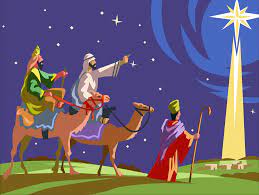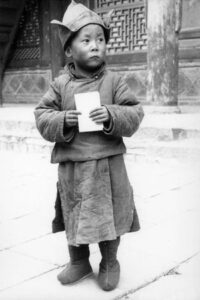Worldly leaders work their way up to positions of authority, are elected, inherit their jobs or sometimes seize power. Spiritual masters are different, since their authority reflects their inner lives and not the material plane. They, too, may work their way up in an organized group, or they may simply be found. Their stories of recognition, sometimes at an early age, may be recorded for history.
Much has been written about the Christmas star, with astronomers, astrologers and historians weighing-in on what, exactly, it was. It’s been seen as a comet, a Jupiter-Saturn conjunction and a supernova. Astrologer Courtney Roberts believes that the Magi (wise men or even astrologers in some New Testament translations) who visited Jesus from the east were in fact Persian Zoroastrian priests, known for both astrology and dream interpretation. This seems to be a more important point.

Mathew in Chapter 2 tells us that the star was a sign leading the Magi to the baby Jesus. When they inquired where the child could be found, the Roman ruler Herod hoped to enlist them to locate the baby for him (learning of the prophecy in Micah 5:2 stating that the child would come from Bethlehem). But the Magi were warned in a dream and went straight home after recognizing and presenting gifts to Jesus, who may have been two years old.
Micah also says that the promised Israeli ruler’s “goings forth have been from of old, from everlasting,” which might also suggest reincarnation. The Magi’s gifts of gold – for royalty but also representing alchemical perfection; frankincense – an incense used in temple rituals that represents spirituality; and myrrh – used in burial rituals, which might allude to the reappearance of the spirit on earth.
We have more detailed information on the discovery and recognition of the 14th Dalai Lama, the great guru of compassion, believed to be the reincarnation of his predecessor. Once again, prophecy and signs led wise men to find him. The head of the 13th Dalai Lama, after his death in 1935, was found facing east. It was the Tibetan Regent’s role to find the successor, and he saw a clear vision in the sacred Tibetan lake of a monastery and house. Following these and other signs, search parties of high lamas and dignitaries looked for the place described.
When found, the party disguised their roles, but the two-year-old boy of the household recognized the rosary worn by the group’s leader and named him. Other recognition tests followed; various items were presented to the boy, and he was able to identify the ones he had owned in his previous incarnation. His identity was confirmed and the 14th Dalai Lama was officially enthroned in 1940.
Though these stories are separated by over 2,000 years and 3,000 miles, they describe similar spiritual practices of discovery and verification. Both appear to reflect trust in traditional practices that include omens and prophecies, and were considered important enough to be captured for posterity.
This brief biography of the Dalai Lama includes the story of his identification.
Austrian mountaineer Heinrich Harrer also wrote about the discovery of the Dalai Lama in his book, Seven Years in Tibet.
How to be Compassionate is a wonderful and accessible book from the Dalai Lama.
Ian Stevenson Was a well-known reincarnation researcher; he wrote about young children who remembered previous lifetimes in 20 Cases Suggestive of Reincarnation and Children who Remember Previous Lives.
